An official video has been released explaining the specifications of the AMD GPU installed in the PlayStation 5 Pro, with lots of interesting information, such as 'Development of the PS5 Pro began in 2020' and 'Equipped with the world's first ray tracing technology'

A video has been released in which Mark Cerny, lead architect of the PlayStation 5 (PS5), explains the 'enhanced GPU,' 'enhanced ray tracing,' and 'AI super-resolution technology' that are installed in the '
Mark Cerny's 'PlayStation®5 Pro Technical Seminar' video released. Delivering technical details about the design of PS5 Pro! - PlayStation.Blog Japanese
https://blog.ja.playstation.com/2024/12/19/20241219-ps5pro/
PS5 Pro Technical Seminar at SIE HQ - YouTube
Development planning for the PS5 Pro began in 2020, before the release of the PS5. The company set three key priorities for the project: 'Strengthening the GPU,' 'Strengthening ray tracing,' and 'AI-based super-resolution (PSSR).'

The PS5 Pro is equipped with GDDR6 memory with a bandwidth of 576 GB/s as system memory. The PS5 Pro requires a lot of memory to support 8K output, and several hundred MB of memory is required for the internal buffer of the PSSR and several hundred MB of memory for ray tracing. For this reason, it is also equipped with relatively slow DDR5 memory, and by moving most of the OS to the DDR5 memory, high-speed memory can be allocated to game processing.
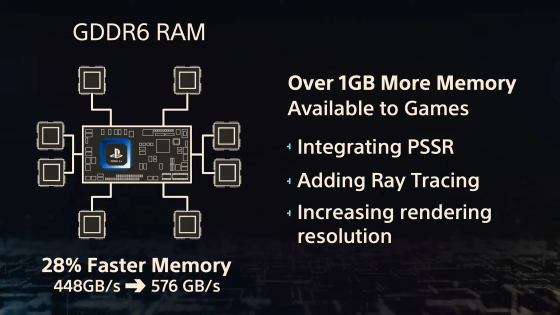
The PS5 was equipped with AMD's RDNA 2 GPU, but the PS5 Pro is equipped with a 'HYBRID RDNA GPU' that combines multiple versions of RDNA. In addition, the PS5 was equipped with 18 subunits called 'Work Group Processors (WGPs)', but the number of WGPs has been increased to 30 in the PS5 Pro.
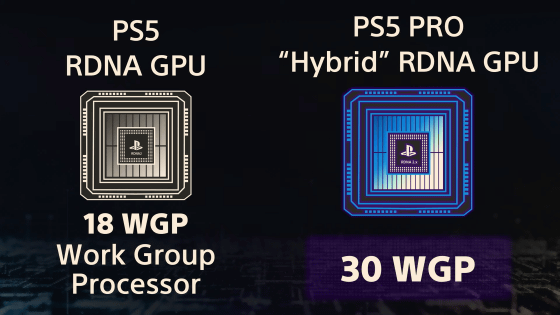
The underlying technology of the HYBRID RDNA GPU is called 'RDNA 2.x', which is located between RDNA 2 and RDNA 3. In addition, it is the world's first to adopt technology that will be used in future RDNA for ray tracing, and also incorporates custom RDNA for AI processing.

The reason why the PS5 Pro does not fully adopt RDNA 3 is to maintain compatibility. RDNA 2 and RDNA 3 have different shader programs, so if the PS5 Pro adopts RDNA 3, game developers will have to prepare separate codes for the PS5 and PS5 Pro.

So, while maintaining the shader program from RDNA 2, we accelerated vertex and primitive processing by incorporating part of the geometry pipe of RDNA 3. This is RDNA 2.x.

The PS5 Pro has 1.67 times the number of WGPs compared to the PS5, and the number of floating-point operations per second has also increased by 1.67 times to 16.7 FLOPS. However, during actual game processing, factors such as 'memory bandwidth' and 'how various game engines respond to the new architecture' are intertwined, so game rendering performance is not simply 1.67 times faster.

According to Cerny, actual game rendering performance has improved by up to 1.45 times. For example, the rendering process that takes 16 milliseconds to run at 60 fps on the PS5 can be completed in 11 milliseconds on the Pro, and the remaining 5 milliseconds can be used to perform other processes such as ray tracing.

The PS5 Pro also has improved ray tracing processing performance. Ray tracing was showing signs of becoming popular even before the development of the PS5 Pro began, but there was also the problem of very high calculation costs. For this reason, the development team set 'speeding up ray tracing calculations' as one of their top priorities. They ultimately worked with AMD to bring future ray tracing features to the PS5 Pro for the first time. This makes the PS5 Pro 2x to 3x faster in ray tracing calculation speed than the PS5.
Generally, ray tracing processes divide an object into countless triangles and calculate how each ray reacts to the triangle. The PS5 and PS5 Pro make processing more efficient by dividing triangles into units called boxes.

The PS5 and PS5 Pro use the 'Intersection Engine' in each WGP to calculate the trajectory of rays. In the case of the PS5, an acceleration structure called 'BVH4' is used, and the Intersection Engine can calculate rays for up to four boxes or one triangle per cycle. The PS5 Pro uses an acceleration structure called 'BVH8', which can calculate up to eight boxes or two triangles per cycle.

In addition, the PS5 Pro improves the efficiency of ray tracing processing by performing stack management in hardware. The PS5 series WGP can process 32 or 64 items at a time. If all 32 processing contents are the same, high-speed processing is possible, but if the processing contents are different, the processing time will be longer. In this case, processing with similar contents is called 'coherent processing', and processing with different contents is called 'divergent processing'.

In ray tracing, the degree of branching changes depending on the object that the light rays hit, and processing takes a long time when the degree of branching is large, such as on a curved surface.

On the PS5, stack management was performed within the shader program, but on the PS5 Pro, stack management is now handled by the hardware, simplifying shader programs and reducing the degree of branching.

Simplification of the shader program has made it possible to achieve faster processing speeds compared to the PS5, even in situations where the ray tracing process branches out significantly.

One of the highlight features of the PS5 Pro is the AI-based super-resolution technology 'PSSR.' Simply put, PSSR renders frames with a resolution smaller than 4K and then uses AI to enlarge the rendering results to make them look 4K, reducing the load on rendering and enabling faster, higher quality screen drawing.
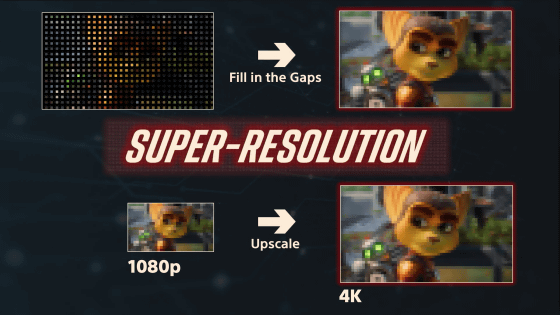
The PSSR process is roughly divided into 'pre-processing,' 'augmentation using a convolutional neural network (CNN),' and 'post-processing.' CNN performs hundreds of trillions of calculations per second, so a high-performance processor is required.

In order to make CNN faster, in addition to incorporating AI processing capabilities into the GPU, there is also the approach of adding an NPU dedicated to AI processing. In addition to CNN, PSSR also requires pre-processing and post-processing, but the NPU is not good at these processes. For this reason, the PS5 Pro will not be equipped with an NPU but will instead enhance the GPU's capabilities.

When the development team began developing the PS5 Pro in 2020, they recognized the need for high-quality neural networks and hardware. While one way to prepare these would be to purchase technology licenses from other companies, SIE decided to work with AMD to build its own hardware and neural networks.
As a result of cooperation with AMD, a GPU with an integer computing performance of 300 TOPS was made available, but the bandwidth of the GDDR6 memory installed in the PS5 Pro with a bandwidth of 576 GB / s was insufficient, and only a maximum of 18 TOPs out of 300 TOPS could be utilized.

In fact, the RDNA 2 GPU is equipped with vector registers that allow for high-speed data transfer. Therefore, in cooperation with AMD, we have added 44 new instructions to enable the vector registers in the WGP to be used as memory. This allows the PS5 Pro to fully utilize 300 TOPS integer calculation performance by utilizing a total of 15 MB of ultra-fast memory at 200 TB/s.

Thanks to these innovations, the PS5 Pro's integer performance reaches 300 TOPS and its floating-point performance reaches 67 TFLOPS.

In addition, PSSR has features unique to home game consoles. Generally, in PC games, the rendering resolution is fixed and the rendering frame rate is lowered in high-load scenes, but in home game consoles, the rendering frame rate is fixed and the rendering resolution is lowered in high-load scenes. PSSR is optimized for the operation of 'changing the rendering resolution.'
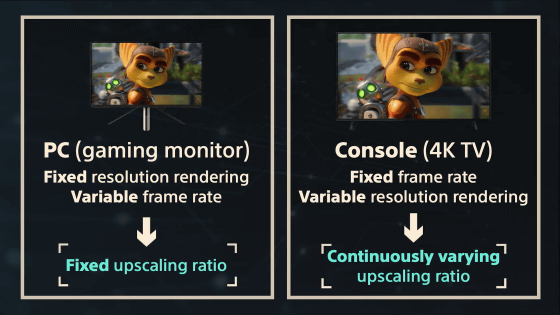
Cerny also touched on SIE's future technological innovations. According to Cerny, raster rendering technology is well developed and only natural progress such as strengthening GPUs and accelerating memory is expected. Meanwhile, the ray tracing field is expected to continue to develop rapidly, and the AI field is also expected to make great progress. SIE is focusing on the development of AI.
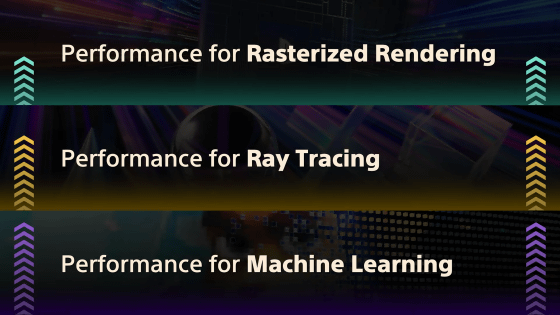
The PS5 Pro now enables super-resolution using AI, but Sony is also planning to research AI technologies such as 'noise reduction' and 'frame interpolation' in the future.

In addition, SIE has strengthened its collaboration with AMD with the aim of 'developing game-specific machine learning architectures' and 'developing game-specific CNNs.' This collaboration project is called 'AMETHYST,' a combination of AMD's theme color red and PlayStation's theme color blue. In addition, the Amethyst Project does not aim to develop technology exclusively for PlayStation, but rather to support the use of machine learning on a variety of devices.

The suggested retail price of the PS5 Pro is 119,980 yen, and at the time of writing, it is being sold for 126,754 yen on Amazon.co.jp.
Amazon.co.jp: PlayStation 5 Pro (CFI-7000B01): Games

Related Posts:







